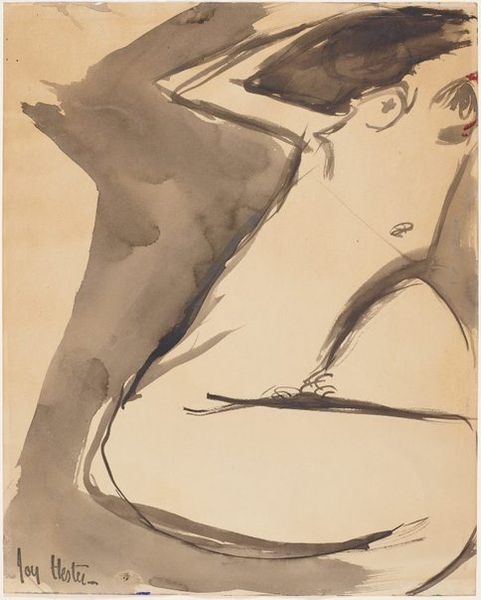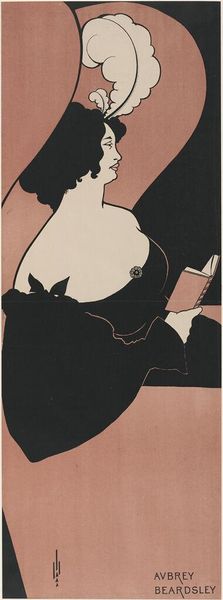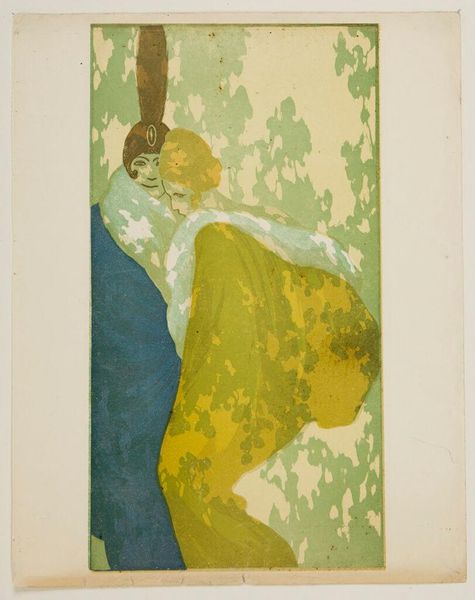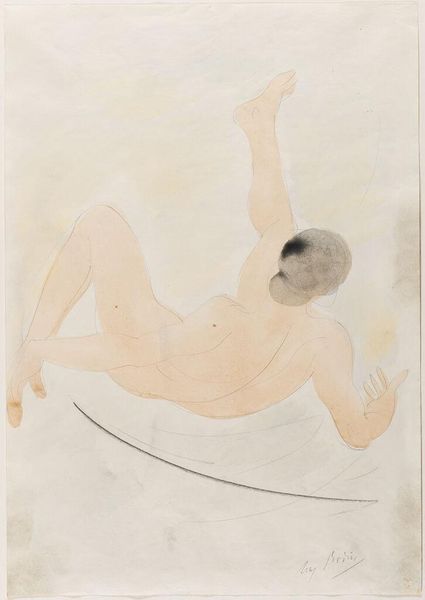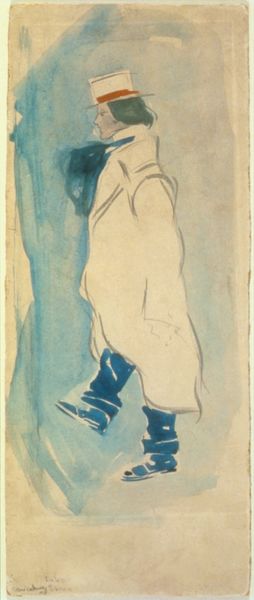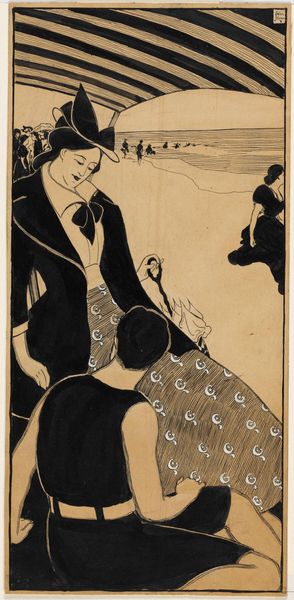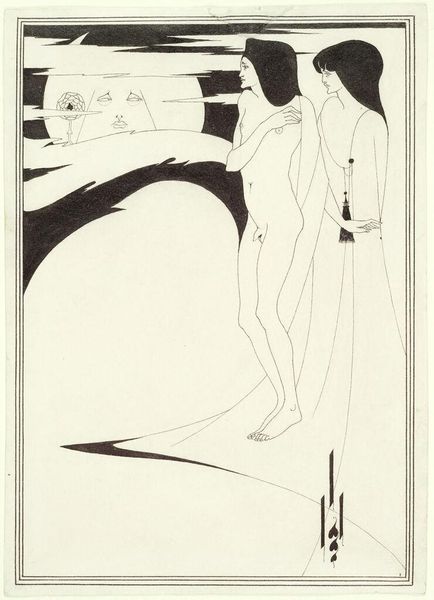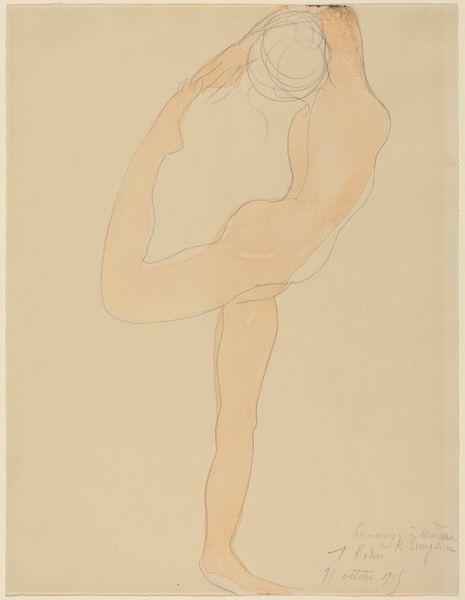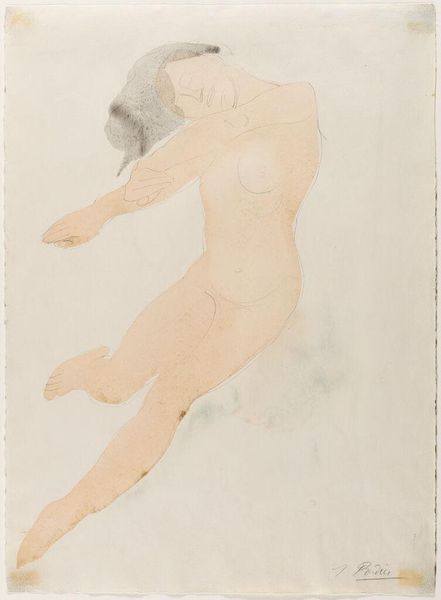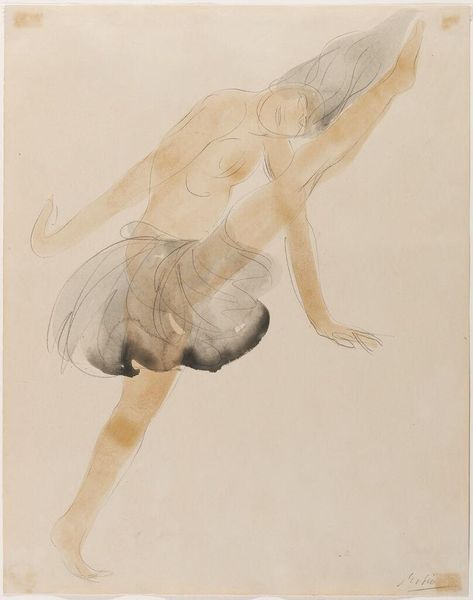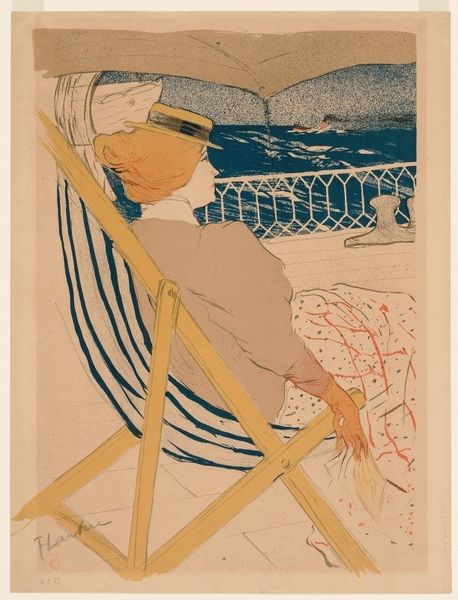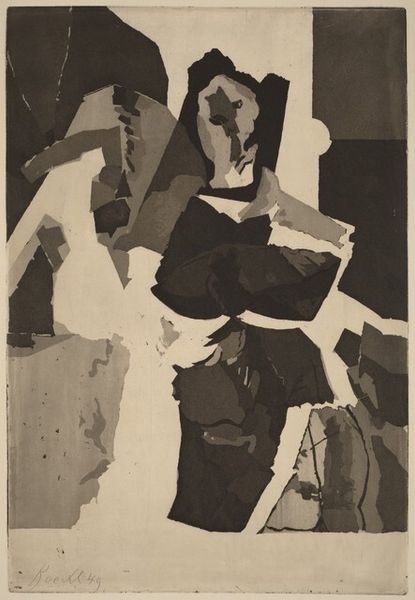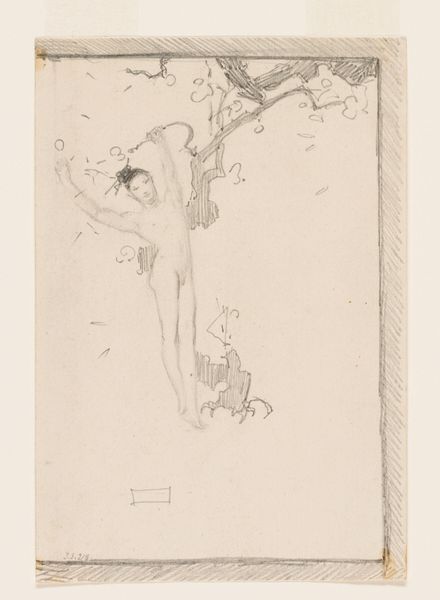
Copyright: Public domain Japan
Editor: This is Koshiro Onchi's "Diving," created in 1932 using watercolor print techniques. It strikes me as very modern, almost stark, but with an undeniable sense of motion. What symbols do you see embedded in this simple image? Curator: It’s fascinating how Onchi synthesizes traditional Ukiyo-e sensibilities with the rising tide of modernism. The diver, caught mid-flight, isn't merely a figure in water; she is, perhaps, a symbol of the individual plunging into the unknown future, a theme quite resonant in the interwar period. The geometric forms—the diving board, the simplified clouds—speak to a world being reshaped by industrialization and new modes of thought. What feelings do these juxtapositions evoke for you? Editor: I can see that. There is a tension between the softness of the watercolor and the sharp angles. The blank space around the figure makes it feel lonely but also courageous. How might Japanese printmaking traditions contribute to this? Curator: The negative space, or 'ma,' is key. In traditional Japanese aesthetics, 'ma' isn't just emptiness; it's charged with potential, it allows the eye and the mind to complete the image, inviting contemplation. The diver’s isolation becomes not just loneliness, but a powerful assertion of individual agency, wouldn't you agree? Consider how the print medium itself, with its layering and registration, emphasizes a calculated construction of reality, not a mere reflection. Editor: That makes so much sense! I was so focused on the diver as a figure; I missed the power of the surrounding space. I guess art is often more about what isn't there than what is. Curator: Precisely. Onchi masterfully uses absence to amplify presence, silence to accentuate the dive's profound moment of decision and transition. A small splash becomes a massive transformation. Editor: I’ll definitely look at prints differently now. Thanks!
Comments
No comments
Be the first to comment and join the conversation on the ultimate creative platform.
